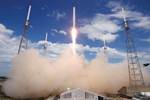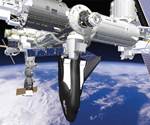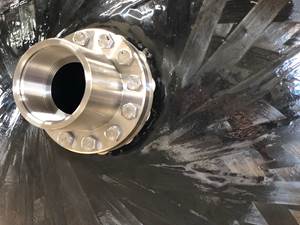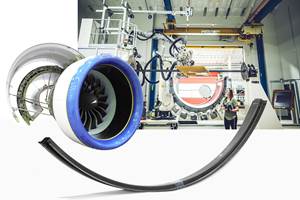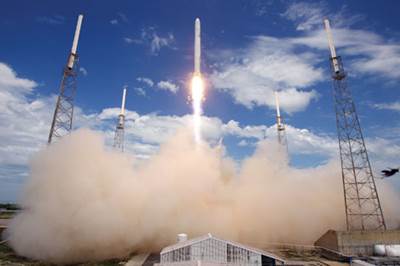The emerging commercial space industry: Google’s Lunar XPRIZE
This sidebar to the September 2016 feature story on the emerging commercial space industry focuses on Google’s Lunar XPRIZE.
Google (Mountain View, CA, US) and the XPRIZE Foundation (Culver City, CA, US) have partnered to create the Google Lunar XPRIZE “in order to incentivize space entrepreneurs to create a new era of affordable access to the Moon and beyond while inspiring the next generation of scientists, engineers, and explorers,” according to Chanda Gonzales, prize lead for the Google Lunar XPRIZE.
Andrew Barton, the competition’s director of technical operations, explains that of the seven active prizes in competition now, the Google Lunar XPRIZE is the biggest. “We don’t use conventional contracting methodologies,” Barton says. XPRIZE instead uses the incentive prize model to encourage companies and innovators to do things that they wouldn’t otherwise do. “XPRIZE guarantees that one team will win the grand prize if it is the first to complete the requirements before the termination date of the prize.” Only non-governmental teams can participate.
The grand prize is US$20 million. It will go to the first team that, on or before Dec. 31, 2017, successfully places a robot on the moon that can travel at least 500m over the moon’s surface and transmit high-definition video and images back to Earth. The second team to do so will win US$5 million. In 2013 and 2014, additional sets of milestone prizes resulted in awards totaling US$5.25 million to five teams that had made substantial technical progress on the ground in preparation for their mission.
The prize was announced in 2007, registrations closed at the end of 2010 and prize contenders must have a signed launch contract by the end of this year. Originally, Barton says, about 30 teams registered, but almost half of them have dropped out. So far, only two of the 16 remaining registered teams have verified their launch contracts: SpaceIL (Jerusalem, Israel) and Moon Express (Cape Canaveral, FL, US).
SpaceIL contracted with the co-manifesting service, Spaceflight Inc. (Seattle, WA, US.), for launch by the Falcon 9 rocket, supplied by Space Exploration Technologies (SpaceX), Hawthorne, CA, US). SpaceIL is building a 1.5m high, 2m wide craft, “a bit larger than a standard US dishwater,” they say, named the Sparrow. In addition to attempting to complete the grand prize requirements, the spacecraft will carry a magnetometer to take measurements of the magnetic field on the surface of the Moon.
Although the Sparrow’s basic structure of lightweight sandwich panels will feature aluminum honeycomb between thin aluminum facesheets, aluminum embedded blocks and inserts, bonded with epoxy film adhesive and foam adhesive, it’s struts will be carbon-fiber–reinforced polymer (CFRP) tubes with bonded aluminum end-fittings. Sparrow’s landing gear struts will have tubes constructed from a combination of CFRP prepreg uni-directional tapes and fabric with bonded aluminum/titanium end-fittings.
Further, its antenna backing panel will be a sandwich construction of aluminum honeycomb bwtween CFRP prepreg fabric facesheets, bonded with epoxy film adhesive with potted aluminum inserts.
Moon Express has contracted with Rocket Lab USA (Los Angeles, CA, US) for its launch. Its MX-1 lunar lander spacecraft is described as “about the size of a large coffee table.” The spacecraft main rocket engine is a dual-mode bi-propellant system that uses hydrogen peroxide and kerosene for propulsion. Rocket Lab is building an all-composite launch vehicle. Its Electron launch system uses additive manufacturing (3D printing) for all primary components of its Rutherford oxygen/hydrocarbon engine and carbon composite construction for its payload fairing, and first and second stage liquid oxygen propellant tanks.
This short article is a Side Story to a feature article titled "The emerging commerical space industry." To read this article, click on its title under "Editor's Picks" at top right.
Related Content
Revisiting the OceanGate Titan disaster
A year has passed since the tragic loss of the Titan submersible that claimed the lives of five people. What lessons have been learned from the disaster?
Read MoreLow-cost, efficient CFRP anisogrid lattice structures
CIRA uses patented parallel winding, dry fiber, silicone tooling and resin infusion to cut labor for lightweight, heavily loaded space applications.
Read MoreInfinite Composites: Type V tanks for space, hydrogen, automotive and more
After a decade of proving its linerless, weight-saving composite tanks with NASA and more than 30 aerospace companies, this CryoSphere pioneer is scaling for growth in commercial space and sustainable transportation on Earth.
Read MoreThe potential for thermoplastic composite nacelles
Collins Aerospace draws on global team, decades of experience to demonstrate large, curved AFP and welded structures for the next generation of aircraft.
Read MoreRead Next
The Private Space Race
NASA passes the development torch to legacy contractors and NewSpace entrepreneurs, igniting a new competition in space transport.
Read MoreThe emerging commercial space industry
A decade since NASA opened extraterrestrial space to potential use as a commercial industry workplace, CW traces the role composites have played in public/private progress toward that goal.
Read MoreCeramic matrix composites: Faster, cheaper, higher temperature
New players proliferate, increasing CMC materials and manufacturing capacity, novel processes and automation to meet demand for higher part volumes and performance.
Read More